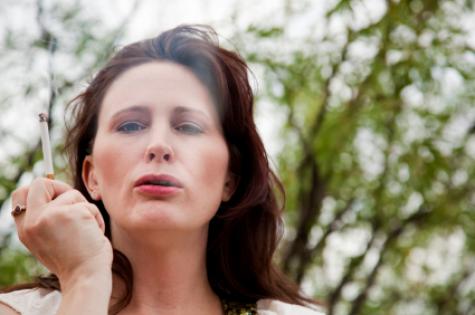The Rudd government’s forthcoming tobacco tax increase is the single most effective way to cut smoking and reduce the thousands of premature deaths that smoking causes each year. It’s a gold star public health policy that is employed universally in nations that have successfully reduced smoking rates.
The body of evidence that price increases reduce smoking quickly and effectively is bulletproof. In short, tax increases induce smokers to quit, reduce the initiation and uptake of tobacco use among young people, and lower the consumption of tobacco products among continuing users.
For every 10% increase in price, consumption of tobacco reduces by about 4%. Half of this decrease is due to adults quitting smoking and young people not taking up smoking. The other half is due to people who continue to smoke, smoking fewer cigarettes.
The planned series of four 12.5% tax increases should lead to about 210,000 fewer Australian adults and 40,000 fewer teenagers smoking. That means around 2.5 billion fewer cigarettes will be smoked each year.
By the end of 2014, a typical pack of 25 cigarettes will likely cost upwards of A$20.
Myths and facts
As with any tobacco control reform, the tobacco industry and its allies will immediately respond with a series of predictable myths to instill doubt about the policy intent and effectiveness.
Myth 1: Australian tobacco taxes are already too high
Just last week, the World Health Organisation (WHO) released a report recognising Australia as a world leader in tobacco control, rated among the top 20 nations for its work in mass media education, smoke-free policies, health warnings and support for smokers.
But Australia is lagging international best practice on tax policy, with total tobacco taxes making up less than 60% of the final price. The WHO benchmark is set at tax comprising a minimum of 70% of the total price. The announced tax increases mean that Australia will be catching up to New Zealand.
Myth 2: This is just a grab for revenue by the Government
Over the past 13 years, there have been just two real increases in tobacco excise duty. In comparison, during the 1990s, there were ten large real increases in price; these tax increases were the most important factor driving reductions in smoking over the 1990s. Governments failing to raise tobacco taxes means that smoking rates fall at a much slower rate.
Myth 3: Tobacco tax increases hurt the poor
Tobacco tax increases are one of the few policy measures that reduce smoking more in low than high income groups. Smokers who are unable to quit following an increase in taxes can also avoid paying the extra cost by smoking fewer cigarettes per day.
In Australia, there are now far more ex-smokers than current smokers, proving that quitting is an achievable and common accomplishment. The vast majority of smokers want to quit, and tobacco taxes are an additional incentive that help smokers quit their addiction for good.
Besides spreading these myths, tobacco industry apologists are already crying “nanny state” at the announced tax increases; suggesting that voters are somehow tired of governments taking effective action to improve the nation’s health.
In reality, the public is highly supportive of tobacco tax increases, particularly if they know the measures are coupled with increased health education and quit-smoking support.
What works in tobacco control?
Tobacco taxes combined with high profile, hard-hitting mass media education campaigns have been shown to be critical in reducing smoking rates.
Additionally, tobacco advertising bans, smoke-free public spaces, graphic health warnings on packages, and quit-smoking support programs are all part of a comprehensive package of initiatives that countries should adopt to reduce the harms caused by tobacco use.
There are also strategies that we know have no impact on smoking rates, or worse – actually increase smoking-related harms. Allowing the tobacco industry to run youth smoking prevention education campaigns has been found to leave young people with a lower perception of harm from smoking, stronger approval of smoking and intentions to smoke in the future and a greater likelihood of having smoked in the past 30 days.
Equally, tobacco industry developed voluntary self-regulatory codes have proven to serve only to delay the adoption of effective government legislation.
What’s next for tobacco control?
Australia is clearly a world leader in tobacco control. Being the first country in the world to implement plain packaging is testament to the government’s commitment to ending the 15,000 deaths per year due to tobacco use. But in order to continue to pave the way in global tobacco control, Australia will need to continue to be innovative.
Changing the tobacco retail environment is a largely untapped source for further reforms. Cigarettes are sold on virtually every street corner in Australia with limited restrictions on where and when it can be sold, who can sell it, how much they can sell, and who they can sell it to. While some Australian states require retailers to have a license, they are easy and inexpensive to acquire and never revoked.
Emerging evidence suggests that reducing the density of tobacco retail outlets may be an important tobacco control policy.
And while it can be easily dismissed as “radical”, perhaps in the not-so-distant future, smokers themselves will need to obtain a license in order to purchase tobacco.
* * *
Acknowledgments: A huge thank you to Michelle Scollo for her invaluable assistance in preparing this article.
This article was originally published at The Conversation.



















__small.png)










